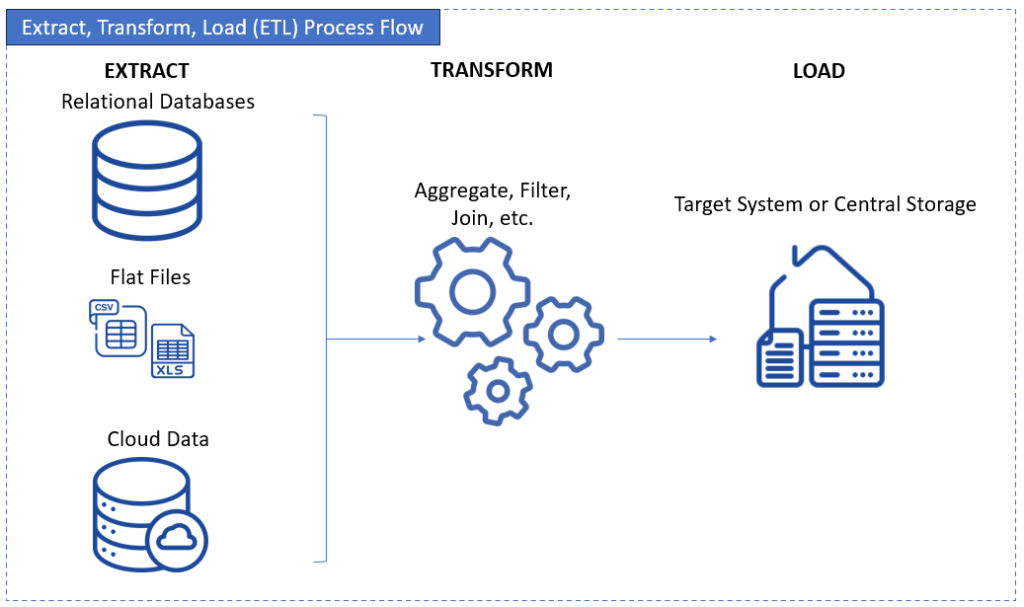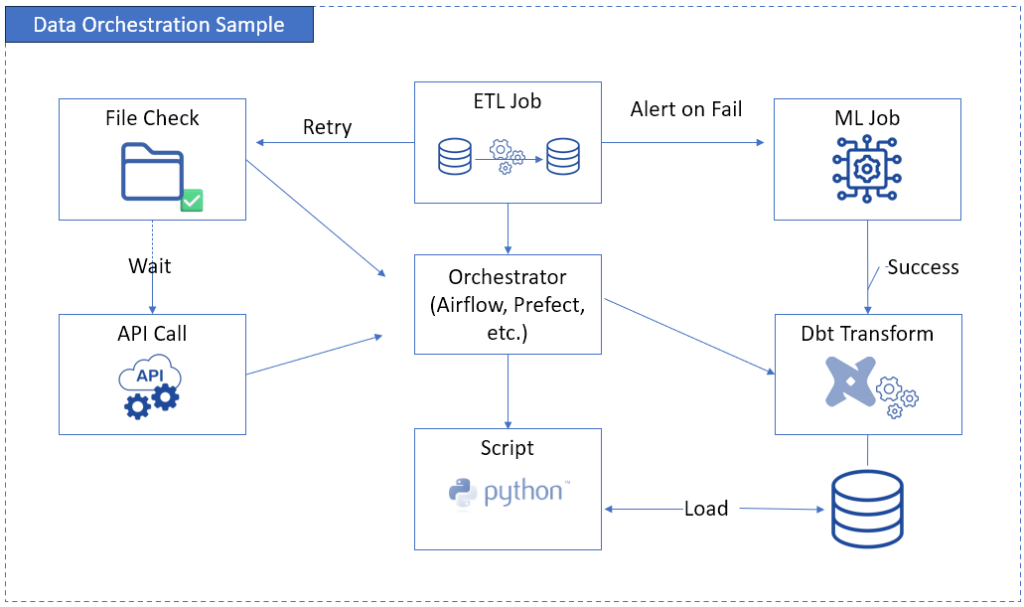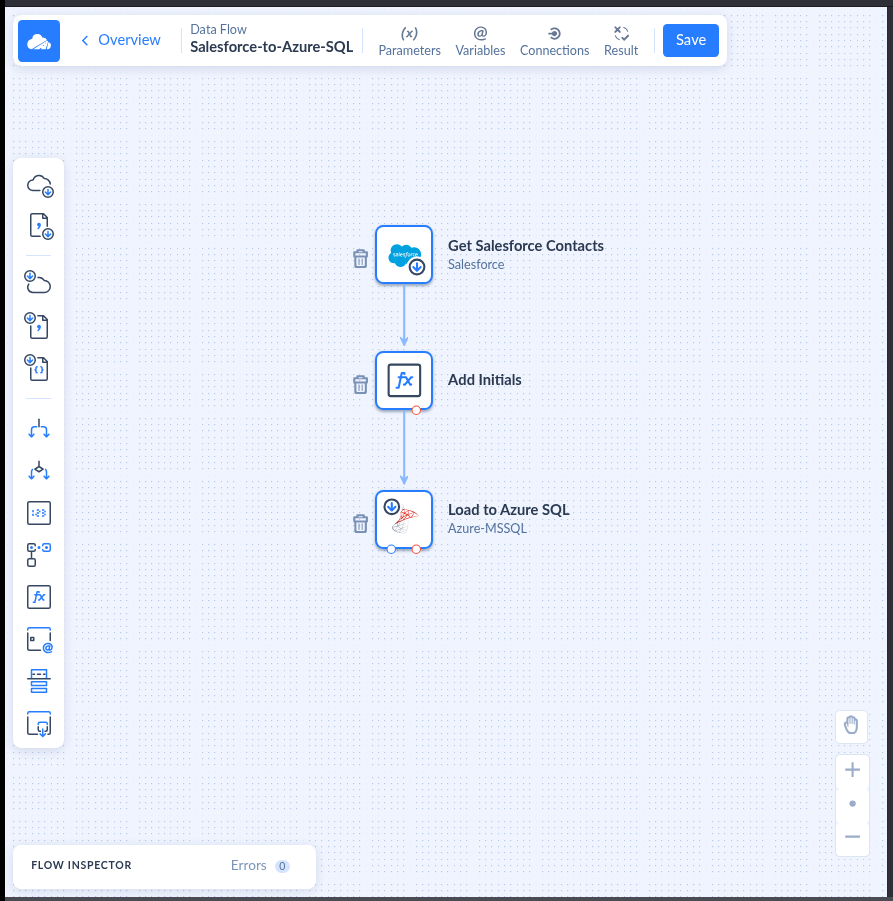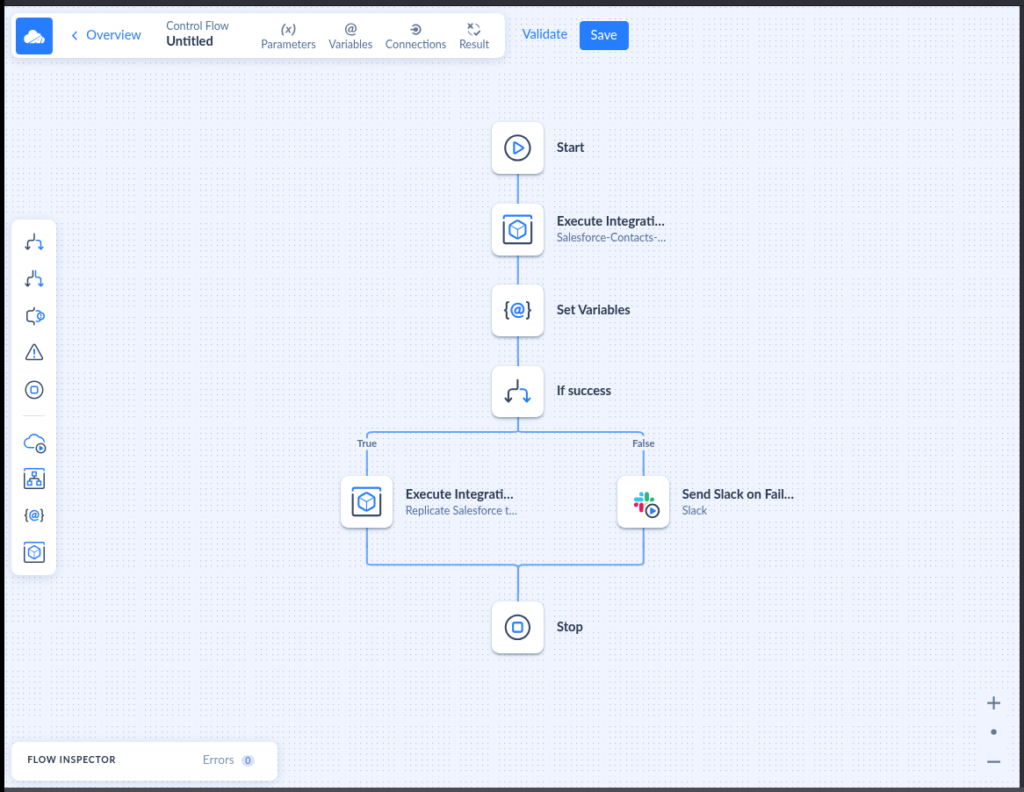The HR manager emailed my boss: “The employee savings didn’t update this period. Still the same as last time.” I checked the logs — job failed. No alert. No retry. Just… silence. That’s when I realized data orchestration vs. ETL aren’t just buzzwords — it’s the reason this stuff breaks when you least expect it.
So, what’s the real difference between orchestration and the usual batch stuff? This isn’t another vendor-friendly breakdown. This is for the person who gets paged at 3AM and has to figure it out half-asleep.
We’ll dig into both approaches, where they help, where they break, and how to stop babysitting every job.
Let’s begin.
Table of Contents
- What the Heck is ETL, Really?
- What is Data Orchestration — and Why You’ve Probably Already Been Doing It
- So… ETL or Orchestration? Here’s How I Decide
- Real-World Stack: Using Both Without Losing Your Mind
- The Tools Part (But Not a Boring List)
- Wrap-Up — No More Pager Alerts, Please
What the Heck is ETL, Really?
My first ETL job didn’t feel like an ETL job. Honestly, I didn’t even know that term existed back then. No one said “pipelines.” Definitely not “orchestration.”
I just had one goal: get fingerprint scans out of an MS Access database and into SQL Server. I used Data Transformation Services — that’s what SSIS was called in the SQL Server 2000 days. It worked… until MS Access did what MS Access does. Quirks. Job failed. Logs? Not helpful. I just knew it broke — and I had to fix it before anyone asked questions.
That’s ETL: Extract, Transform, Load… then pray.
Years later, I started seeing blog posts saying ETL was dead. That ELT was the new king. And yeah, they made a good case. But here’s the truth: ETL’s not dead — it’s just not trending.
It’s still everywhere. Especially when real-time isn’t a dealbreaker, and when you really need is solid, repeatable structure. When you don’t want surprises — just clean data that shows up on time and doesn’t break everything downstream.
Let me show you what ETL actually looks like, minus the textbook fluff.
The 3-Step ETL Recipe
ETL’s like cooking. You’ve got ingredients from all over — flat files, APIs, SQL dumps — and you need to turn them into something other people can digest.
Here’s the cook-through:
- Extract:
Grab your ingredients. Could be CSVs, Access databases (shudder), SQL Server tables, REST APIs, even Excel files named final_final_thisone_really.xlsx. Doesn’t matter. Just pull the raw stuff in. - Transform:
This is where the real work lives. You join things, filter rows, convert types, apply business rules, maybe rename columns so someone downstream doesn’t lose their mind. 90% of your debugging happens here. Easily. - Load:
Serve it up. Snowflake, PostgreSQL, SQL Server — wherever it needs to go. This is the moment of truth: it either lands clean, or something breaks, and you get that “hey, why is the report empty?” email.
Here’s what it looks like:

Quite a corporate way to express it, but it explains things visually.
ETL — the Good and the Bad
It works. Until it doesn’t. And then you remember just how fragile things can get.
✅ What it does well:
- Brings scattered data together
I pulled customer info from two different CRM systems plus a marketing tool. After the cleanup and merge? Dashboard magic. One clean, unified view. No one asked where the data came from — it just worked. - Adds value while cleaning
Once joined a bunch of flat files with messy product metadata. After transforming it properly, the users finally understood what “Product ID 802” meant. They stopped asking. That’s when I knew it worked. - Breaks down silos
Combined HR and finance into one warehouse. After that? No more “whose numbers are right?” debates. Everyone had the same answers. Huge win.
⚠️ Where it trips up:
- Takes time — a lot of it
One migration job we ran took so long it spilled into business hours. Office folks were logging in, customers hitting the system… and we were still staging and re-transforming. Stakeholders wanted speed. We just wanted it to finish. - Easy to break during transform
I fixed a currency conversion bug… or so I thought. It inflated revenue for a full week before someone spotted it. Yep. Fun explaining that one. - Not built for real-time
ETL’s a batch-first tool. If people expect live updates every second, you’re either overbuilding it… or duct-taping your way to a nervous breakdown.
ETL’s Best Days
Here’s when ETL really earns its keep — the kind of situations where it’s not just useful, it’s the best tool for the job.
- Data Warehousing:
Still a go-to. I built a warehouse for an insurance broker — handled sales KPIs. The structure was solid because I also designed the app feeding it. ETL ran every night. Didn’t need to be real-time. It just had to be right. - BI Reporting:
Dashboards don’t build themselves. ETL preps the data, applies logic, adds filters, handles the quirks. That insurance warehouse? Power BI picked it up like a charm. Sales teams were happy. My inbox was quiet. - Data Migration:
My first major one? FoxPro to SQL Server 7. Back in 2000. ETL helped clean and re-map all of it. Suddenly, our company’s data was internet-ready. I’ve done a bunch more since then — and every time, ETL made the jump smoother. - System Integration (a bit old-school, but still solid):
Had to link a petty cash app in SharePoint to SAP Financials. ETL mapped the transactions to the chart of accounts. Nothing fancy, but it worked. If you’re working with on-prem systems and need stable handoffs — ETL’s still one of your best bets.
Oh — and if juggling five tools makes your eye twitch? There are tools for ETL and data orchestration in one platform now. They help tie everything together without duct tape and late-night hacks.
Anyway… ETL’s great at prepping the data. But it doesn’t run the whole show. If you’ve ever thought, “Can’t this thing wait for the other job to finish first? Or retry if it fails?” — then yeah, orchestration is where you start leveling up.
Let’s dig into that next.
What is Data Orchestration — and Why You’ve Probably Already Been Doing It
Turns out I was orchestrating jobs before I even knew it had a name. Back then, I just called it, “Please don’t fail again tonight.”
We had duct-taped SQL Agent jobs. Some ran at 1AM, others waited until one file showed up in a network folder. One job kicked off five others, with logic stitched together by stored procs and crossed fingers. I didn’t think of it as orchestration. I thought of it as surviving.
Now that I look back? That was orchestration — just the pre-Airflow, pre-Prefect, no-fancy-DAG version. It was fragile. Messy. But it worked. Sort of.
That’s what orchestration is: the layer that holds the whole thing together. It checks dependencies, triggers jobs, handles retries, logs what happened, and pings you when something blows up.
Basically, it’s the difference between duct-taping your workflows together… and giving them an actual brain.
Here’s a sample orchestration with an ETL job within its workflow:

What Data Orchestration Really Adds (vs. Just Using ETL)
Let’s keep this messy and real. Here’s what orchestration actually helps with:
- Stops you from hard-coding dependencies in ten different places.
- Makes the whole workflow visible — no more “where’d that job go?”.
- Cuts down those 3AM “wait, why didn’t it run?” moments.
- Coordinates your ETL jobs, your dbt runs, maybe even your ML stuff — all without babysitting every step.
Remember those SQL Agent chains where you hoped step 3 wouldn’t silently fail and ruin step 4? Orchestration tools kill that kind of guesswork. Once it’s wired up, it’s like… magic. (Okay, sometimes cursed magic — but still better.)
Orchestration: The Good Stuff and the “Ugh, Why Did I Do This?”
Thing is, sometimes it can be too much.
✅ When It Feels Like a Win
- You stop patching the gaps you already solved manually.
SSIS can email you on failure — cool. But what about logic like, “wait for the third-party API to finish before step two,” or “only run this on Fridays if the finance file exists”? Orchestration handles that without ten SQL Agent jobs and a pile of IF statements. - You get one place to manage all the chaos.
SQL Agent’s great if everything lives inside SQL Server. But once you’re wrangling Python scripts, S3 buckets, dbt models, and REST APIs? Yeah… that tidy control quickly turns into duct tape. Orchestration brings all the moving parts into one dashboard. - You feel less panic at 3AM.
That one time your SFTP upload failed silently and job 3 still ran? Orchestration can check upstream conditions, pause if something’s missing, and alert you before things spiral. Less babysitting. More sleep.
⚠️ When It’s Just More Work
- You overengineer for something that didn’t need it.
I once set up orchestration for a two-step process — fetch CSV, load to SQL. Took me three times longer. Could’ve done it with a simple Agent job and gone home early. - You’re stuck maintaining another tool.
Some orchestration tools look slick, but add a learning curve, server setup, configs, secrets, logging… It’s not “just use Airflow” when your team has no bandwidth. - You lose visibility instead of gaining it.
Ironically, if the orchestration tool isn’t properly monitored, now you’ve added a middle layer that hides the failure — instead of surfacing it. Been there. Not fun.
Anyway… once you realize ETL’s not the whole picture and orchestration isn’t just “fancy scheduling,” the real question hits you: which one do I actually need?
That’s where we’re headed next.
Let’s go.
So… ETL or Orchestration? Here’s How I Decide
Honestly, I still ask myself this every time I build a new flow. Some days, I think, “ETL’s enough.” Other times, I’m staring at a web of scheduled jobs and just mutter, “Yeah… this needs orchestration.”
If you’re stuck choosing, here’s how I usually break it down. It’s not perfect. But it helps — especially when your brain’s fried and you’re just trying to ship something that works.
| What You’re Dealing With | ETL (Extract, Transform, Load) | Data Orchestration |
|---|---|---|
| What’s it really doing? | Moves and cleans data | Manages whole workflows across tasks and systems |
| Main focus | Data in → transformed → data out | Making sure everything runs in the right order |
| Flexibility | Sticks to the script — great for repeatable jobs | Adapts on the fly — handles branching logic, retries, etc. |
| Complexity it can handle | Structured and predictable | Messy, multi-step, multi-system chaos – APIs, cloud storage, weird dependencies, you name it |
| Scale | Works fine for small to mid setups | Shines in large, complex environments |
| Real-time stuff | Not really its thing — it’s a batch job buddy | Designed for event-driven or real-time jobs |
Note: this isn’t some hard line in the sand. I’ve pushed ETL way past its comfort zone (don’t ask), and I’ve seen orchestration used for stuff a cron job could’ve handled. You figure it out as you go.
Signs You’re Fine with ETL
- You control both the source and the destination — no weird systems in between.
- The job runs once a day, a week, a month (and that’s enough).
- Your boss never asks for real-time anything.
- You’ve got alerts set up, and they actually work.
- Dependencies are simple: Job A, then B, then C — done.
- You rarely get surprised by job failures (and if you do, it’s usually bad data).
A simple ingestion or a simple ETL job like the one below doesn’t need a complex orchestration.

It will only get Salesforce contacts, add a middle initial, and write to Azure SQL. That’s it.
Signs Orchestration Will Save Your Sanity
- You’ve got multiple systems… and they don’t like talking to each other.
- Some jobs only run if other jobs succeed (or fail).
- You’re tired of piecing logs together to figure out what ran and what didn’t.
- You’ve got APIs, ETL jobs, maybe even ML pipelines in the mix.
- Someone always asks, “Why didn’t this update?” and you don’t know where to look.
- You’re using cron + stored procs + Excel exports to “glue” things — and it’s holding on by duct tape.
Been there. Built pipelines with a mix of SQL Agent, Windows Task Scheduler, and “hope.” It’s fine — until it really, really isn’t.
Real-World Stack: Using Both Without Losing Your Mind
At some point, you’ll probably use both ETL and orchestration. Not because it’s trendy — just because things get messy.
Picture this: You’ve got sales data in Salesforce, inventory in PostgreSQL, and customer feedback in Google Sheets (why? don’t ask). You build ETL pipelines to clean and combine it all into Snowflake for your dashboards.
But now you need to run them in order — and only after Salesforce finishes exporting for the day, and only if yesterday’s pipeline didn’t blow up. And by 6AM, because execs want that dashboard before coffee.
That’s where orchestration comes in — running the show, coordinating the steps, and making sure one bad file doesn’t ruin everything. I’ve seen this combo more times than I can count. Sometimes duct-taped with SQL Agent. Sometimes polished with Airflow or Prefect.
And yeah, some teams go ELT instead — load first, clean later inside the warehouse. That works, too. Depends on your tools… and your tolerance for chaos.
There’s no one-size-fits-all here. But once you see how orchestration and ETL can play nice together — one calling the shots, the other doing the cleanup — you stop dreading 3AM alerts.
Anyway, let’s talk tools — but not the boring way.
The Tools Part (But Not a Boring List)
Let’s be honest — this is where most articles turn into a giant product brochure. Not here.
I’m not listing “top 10 tools” with five-star ratings like it’s an app store. I’ll just tell you the ones I’ve actually used (or wish I had time to test properly), what they’re like, and where they shine or surprise you.
Anyway… here’s the lowdown:
ETL Tools You’ve Probably Used
Talend
Popular in enterprises. Open-source roots. Pretty flexible. UI’s a bit clunky in places, but it gets the job done if you’re patient. I once used it to clean up contact data from five systems. Took forever — but it worked.
SSIS
Ah, the classic. Started with DTS in SQL Server 2000 days. I still remember dragging those weird colored arrows around at 2AM. SSIS shines when everything stays in Microsoft land. Throw in a weird flat file format, and yeah… it gets spicy.
Integrate.io
More modern take. Cloud-native. Point-and-click style but with enough muscle to handle joins and basic transforms. Great when you want to set something up fast without code — and it doesn’t look like it was built in 2003.
Data Pipeline Orchestration Tools That Aren’t Terrible
Apache Airflow
Code-heavy. Bit of a beast to set up. But once it’s running? Wow. DAGs (those Directed Acyclic Graphs) make it so much easier to see what’s going on. It helped me figure out why two jobs were skipping — turned out to be a timezone thing. Of course.
Prefect
Feels like Airflow’s friendlier cousin. Easier to set up. Still code-y, but with more “works out of the box” moments. Loved how it handled retries without me babysitting everything.
Dagster
A bit of a newer kid. Structured, modern, but definitely not plug-and-play. If you like your pipelines with strong type-checking and fancy UIs, this is worth exploring. Still getting traction, but promising.
Tools That Do Both-ish
Skyvia
Okay, I write about this one a lot because it actually does ETL and orchestration in the same place. Great for small teams juggling integrations with limited time. You get pre-built connectors, scheduling, monitoring — all in one UI. These are the kind of tools for ETL and data orchestration in one platform that let you ship faster and sleep better.
Take a look below. This Skyvia Control Flow runs 2 Skyvia ETL jobs. But the second only runs when the first succeeds. And when it fails, a Slack message is sent to the admins.

Matillion
Works well with cloud data warehouses like Snowflake and Redshift. Drag-and-drop, but with some scripting under the hood. Bonus: it handles orchestration-ish workflows without needing a separate tool.
dbt (sorta)
Not an ETL tool in the classic sense. Not orchestration either. It’s more T — Transform only — but it plays really well with orchestration tools like Airflow. If you’re in the analytics engineering space, you’ve probably heard the hype.
Anyway, you don’t need all of these. Pick what fits your team’s vibe, skills, and what’s already in your stack. No shame in starting simple.
Up next: we wrap this up and finally get some sleep.
Wrap-Up — No More Pager Alerts, Please.
So yeah, here’s the real deal:
ETL is great at cleaning things up, shaping raw data into something useful.
Orchestration is what keeps the entire operation from becoming a dumpster fire at 2AM.
Put them together? You get a stack that works and lets you sleep at night.
I don’t miss the days when my job was 50% reruns and 50% guessing what broke. If this guide helps you build smarter, sleep better, or stop muttering at logs — totally worth it.
If you’re done juggling five tools and hand-coded jobs, give Skyvia a shot. It does both ETL and orchestration in one clean platform — no duct tape required.
So… ETL or orchestration? If it’s about data, start with ETL. If it’s about workflow, go orchestration. If it’s both — now you know.
F.A.Q. for Data Orchestration & ETL
What is the difference between a data pipeline and data orchestration?
A data pipeline moves data from A to B (and maybe cleans it). Orchestration tells all the pipelines when to start, what to wait for, and what to do if something fails.
When should I choose ETL over data orchestration?
If your pain points are messy data or combining sources, ETL is your tool. If your jobs keep running out of order or skipping steps, orchestration’s the fix.
How does data orchestration work with modern ELT (Extract, Load, Transform) processes?
Orchestration can coordinate ELT steps too — managing loads, scheduling dbt jobs, running SQL scripts — all without you watching over it.
What are the main business benefits of implementing data orchestration?
Fewer failures, faster recovery, clear visibility, and more control. It saves time, reduces stress, and helps teams scale without falling apart.


